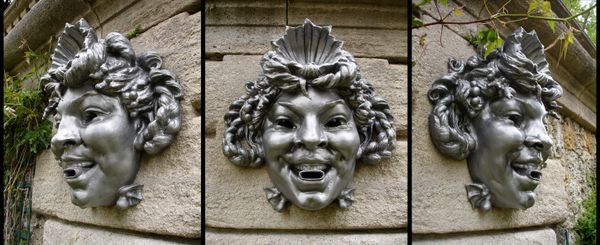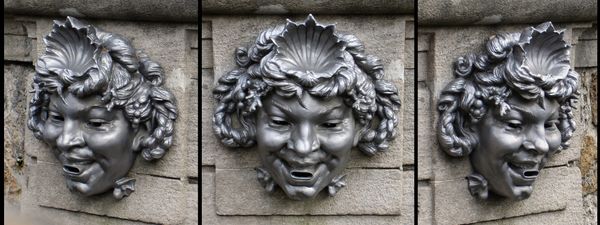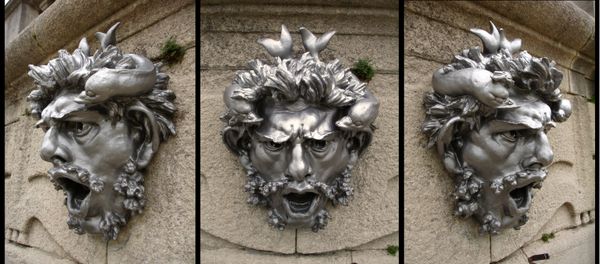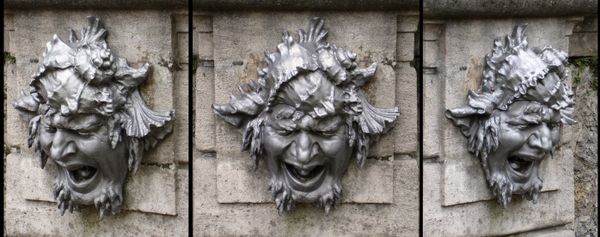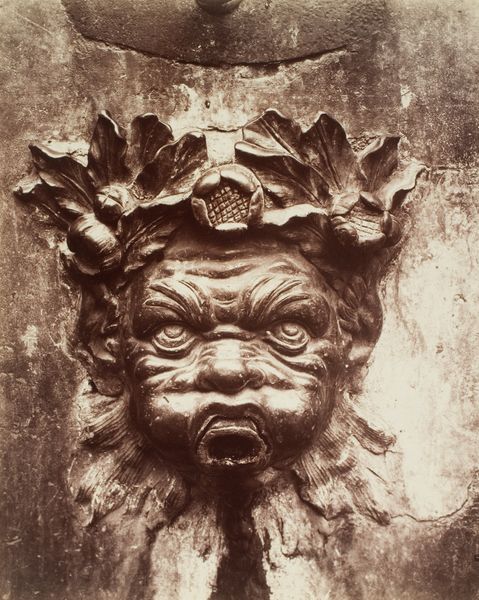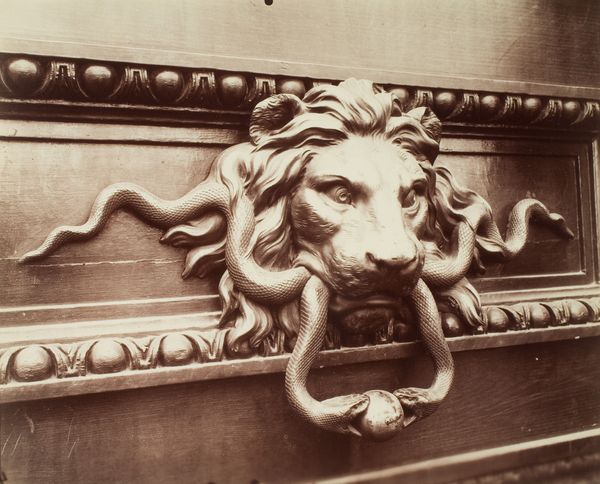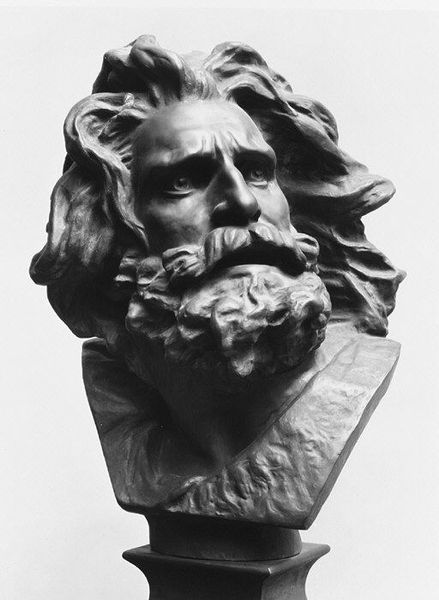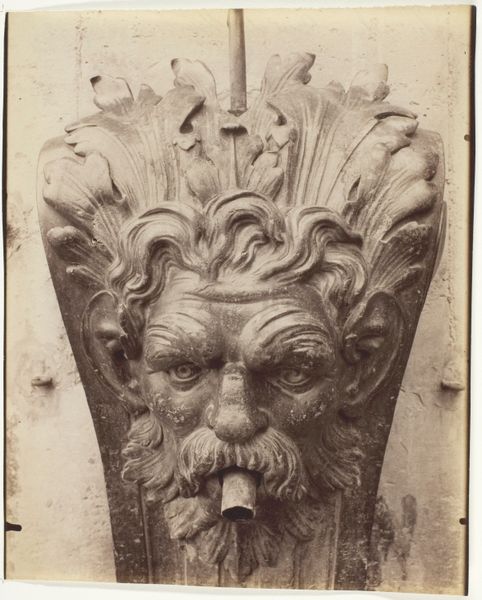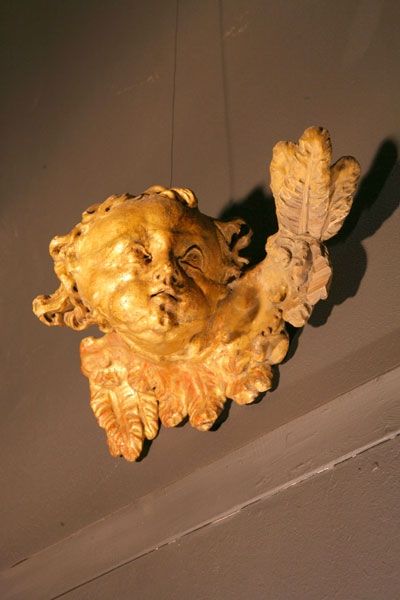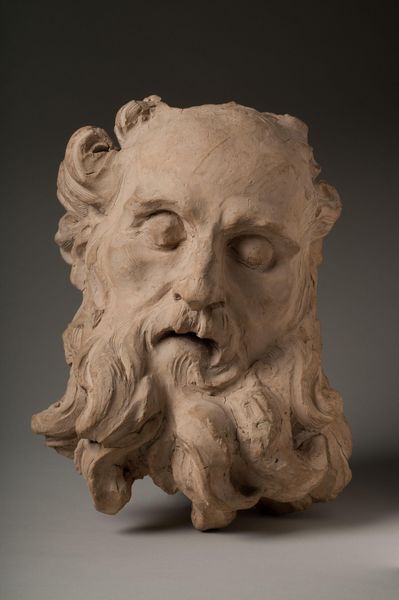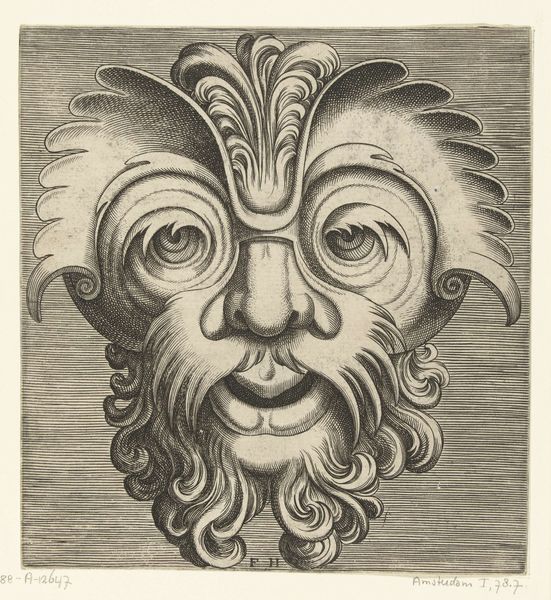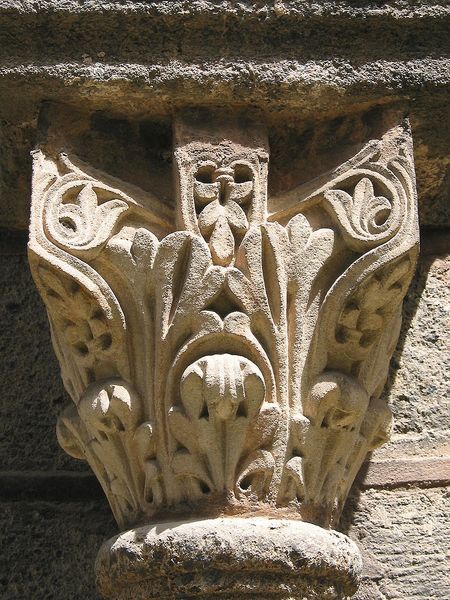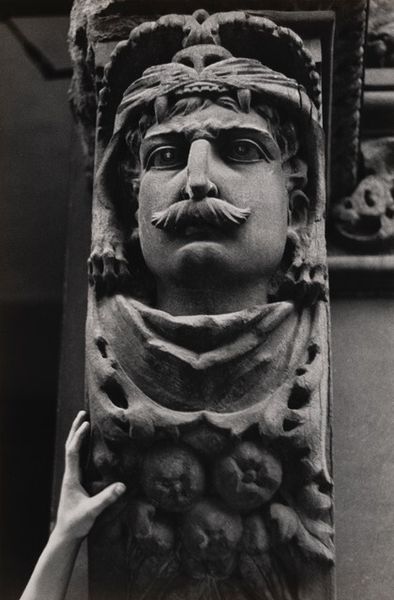
carving, metal, relief, public-art, sculpture, installation-art
#
portrait
#
public art
#
carving
#
metal
#
sculpture
#
relief
#
classical-realism
#
public-art
#
sculpture
#
installation-art
#
symbolism
Copyright: Public domain
Auguste Rodin, the famous French sculptor, probably made these masks in plaster, later cast in metal at the turn of the 20th century. Plaster is a humble material, easily molded, while bronze is a strong, lasting medium, traditionally associated with power and permanence. Rodin expertly exploited these qualities. He favored rough surfaces, full of the marks of his own hand, catching the light in a way that enlivens the features of the faces. These masks might seem purely classical in inspiration, like something found in the ruins of Pompeii. But Rodin was also very interested in the working class of Paris. Plaster was the material of the studio, a place of labor and experimentation. Bronze was the outcome, intended to bring a high price for the artist. So even in a project like this, which seems far removed from the realities of modern life, Rodin was thinking hard about production and class. Ultimately, these faces reflect the emotional struggles of the human condition.
Comments
No comments
Be the first to comment and join the conversation on the ultimate creative platform.
